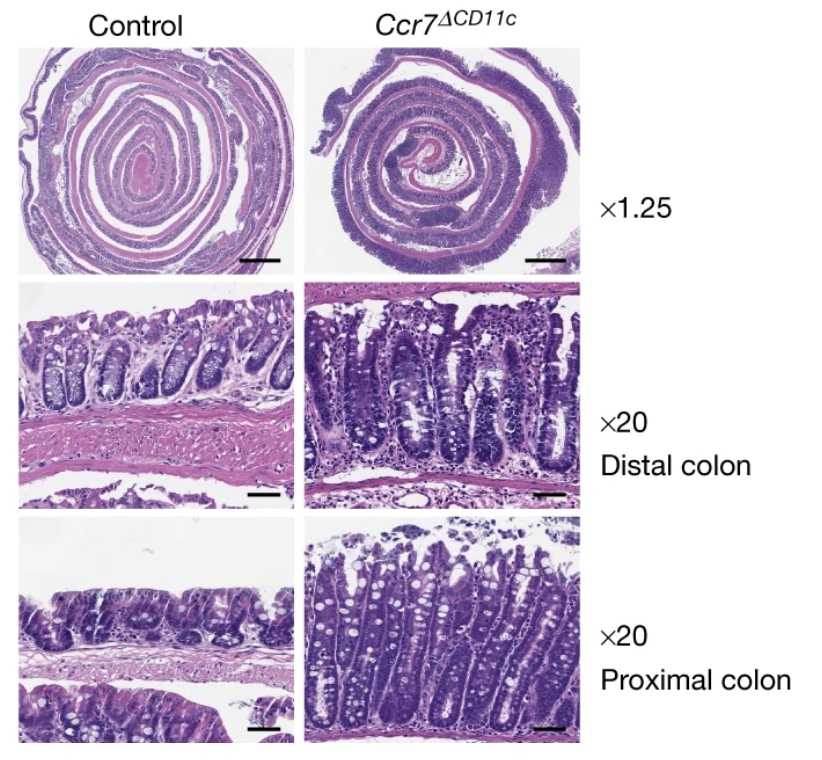
Ranit Kedmi, Tariq A. Najar, Kailin R. Mesa, Allyssa Grayson, Lina Kroehling, Yuhan Hao, Stephanie Hao, Maria Pokrovskii, Mo Xu, Jhimmy Talbot, Jiaxi Wang, Joe Germino, Caleb A. Lareau, Ansuman T. Satpathy, Mark S. Anderson, Terri M. Laufer, Iannis Aifantis, Juliet M. Bartleson, Paul M. Allen, Helena Paidassi, James M. Gardner, Marlon Stoeckius & Dan R. Littman
Nature, 7 September 2022
The mutualistic relationship of gut-resident microbiota and the host immune system promotes homeostasis that ensures maintenance of the microbial community and of a largely non-aggressive immune cell compartment1,2. The consequences of disturbing this balance include proximal inflammatory conditions, such as Crohn’s disease, and systemic illnesses. This equilibrium is achieved in part through the induction of both effector and suppressor arms of the adaptive immune system. Helicobacter species induce T regulatory (Treg) and T follicular helper (TFH) cells under homeostatic conditions, but induce inflammatory T helper 17 (TH17) cells when induced Treg (iTreg) cells are compromised3,4. How Helicobacter and other gut bacteria direct T cells to adopt distinct functions remains poorly understood. Here we investigated the cells and molecular components required for iTreg cell differentiation. We found that antigen presentation by cells expressing RORγt, rather than by classical dendritic cells, was required and sufficient for induction of Treg cells. These RORγt+ cells—probably type 3 innate lymphoid cells and/or Janus cells5—require the antigen-presentation machinery, the chemokine receptor CCR7 and the TGFβ activator αv integrin. In the absence of any of these factors, there was expansion of pathogenic TH17 cells instead of iTreg cells, induced by CCR7-independent antigen-presenting cells. Thus, intestinal commensal microbes and their products target multiple antigen-presenting cells with pre-determined features suited to directing appropriate T cell differentiation programmes, rather than a common antigen-presenting cell that they endow with appropriate functions.